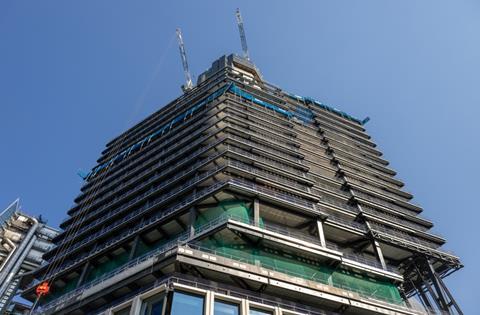RLB tender price forecast said establishment of ÔÇśnon-standardÔÇÖ approaches could favour larger firms
Risk averse bidding strategies adopted during the pandemic have persisted and could become the industry norm, RLB has suggested.
ÔÇśNon-standardÔÇÖ practices developed between client and contractor teams to offset the risks of soaring input costs during and after covid appear to have changed the world of procurement, the consultant said in its latest tender price forecast.
The persistence of the approaches appears to be a response to the ÔÇśstickyÔÇÖ inflation which is keeping construction prices high, while borrowing costs continue to increase as the Bank of England raises interest rates, the report found.
Despite some individual falls in material prices, including timber and steel, which both dropped by around 20% in the year to May 2023, inflationary pressures continue to impact contractors with an overall increase of 1% in the period.

RLB said the more sophisticated bidding strategies could favour larger contractors and sub-contractors with more internal procurement expertise, giving rise to further exacerbation of differentials between contractor tiers.
ÔÇťAlthough covidÔÇÖs effects have seemed to have been resolved, the principles espoused live on in risk-averse bidding strategies and so encourage clientsÔÇÖ design teams to continue to develop ÔÇśnon-standardÔÇÖ procurement solutions,ÔÇŁ the consultant said.
ÔÇťMedium to long-term of course, ÔÇśnon-standardÔÇÖ becomes ÔÇśstandardÔÇÖ, and then the world of project procurement will have changed as the shifts in approach will have become embedded and drive a more sophisticated approach to pre-contract dealings.ÔÇŁ
The report forecast tender prices rising by 3.8% this year before the rate slows to 3.06% next year, and then edging up slightly to 3.24% in 2025 and levelling off at 3.01% in 2026.
Regionally, the sharpest rises are expected in Yorkshire and the North-east, peaking in 2025 at around 5% and 4.5% respectively, while the lowest is forecast in the South-west with price rises slowing to 2%.
The forecast is slightly higher than the one published by Linesight last month, which predicted a 3% rise this year and 2.75% for the following two years.
It is also higher than MaceÔÇÖs tender price forecast from June, which said prices would rise by 3% in London and 3.5% for the rest of the UK in 2023, and to rise by between 2% and 3.5% every year between now and 2027.


























No comments yet